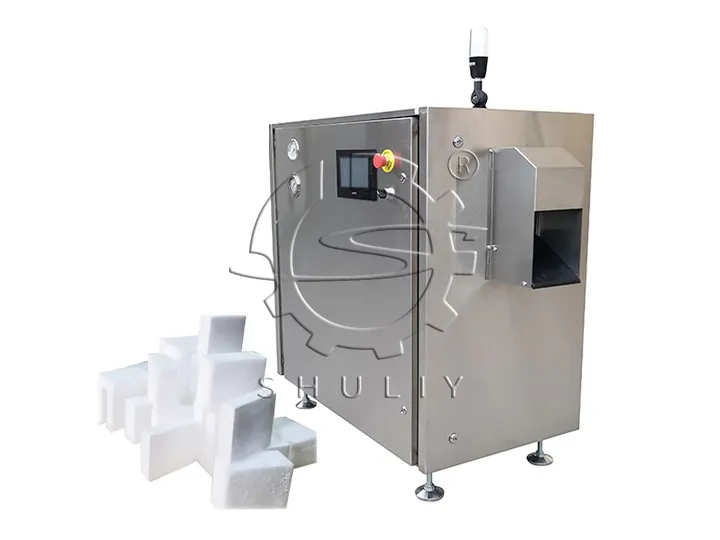The Step-by-Step Dry Ice Production Process Explained
Many industries rely on dry ice, but the journey from a tank of liquid carbon dioxide (LCO₂) to a solid, usable block is often misunderstood. The industrial dry ice production process is not a complex chemical reaction but a highly controlled and automated physical transformation.
This guide breaks down the entire process into clear, manageable stages, from initial machine setup to the final, finished block. Understanding these steps reveals how modern equipment makes in-house production both efficient and straightforward.
Phase 1: Pre-Production Setup
Before any dry ice is made, proper setup is critical for both safety and machine performance. This foundational stage ensures the equipment is ready for a smooth production run.
1. Equipment Placement and Power Connection
The first step is to place the machine on a level surface in a well-ventilated area. This is crucial as the process releases carbon dioxide gas, which must be safely dissipated. The machine is then connected to an appropriate power source, typically a three-phase, 5-wire (380V/50Hz) supply.
2. System Checks and Raw Material Connection
Next, the hydraulic system is prepared by filling the oil tank with No. 46 hydraulic oil to the specified level (70-80% on the gauge). After powering on the machine, a quick motor check is performed to ensure it rotates in the correct (clockwise) direction. Finally, a bellows hose is used to connect the liquid CO₂ source to the machine’s carbon dioxide inlet.
Phase 2: The Automated Dry Ice Production Process
With the setup complete, the core production cycle can begin. This entire sequence is orchestrated by the machine’s control system, often a high-quality Siemens PLC, which ensures precision and repeatability.
Step 1: Initiation via the Control System
The operator begins the process with a simple “one-touch start” on the Siemens touchscreen. This single command initiates the fully automated cycle.
Step 2: Liquid CO₂ Injection
The control system opens an internal valve, allowing pressurized liquid CO₂ to flow from the supply tank into the machine’s compression chamber. The duration of this injection, or “ice spraying time,” is a key parameter set by the operator to control the final block’s weight.
Step 3: Expansion and Solidification
As the LCO₂ enters the lower-pressure chamber, it expands rapidly. This causes an instantaneous drop in temperature, converting about half of the liquid into solid CO₂ “snow.” The remaining liquid flashes into cold CO₂ gas, which is safely vented.
Step 4: High-Pressure Hydraulic Compression
Once the chamber is filled with snow, the injection valve closes, and the powerful hydraulic system takes over. A piston compresses the fluffy snow with immense force, fusing the particles into a dense, solid block. This compression is what gives the final product its high density and long-lasting properties.
Step 5: Ejection and Cycle Repetition
The hydraulic piston retracts, and an ejector plate pushes the finished dry ice block out of the chamber. The machine is now ready to immediately begin the next cycle, ensuring a continuous dry ice production process.
Advanced Dry Ice Block Machine for Dry Ice Production
Phase 3: Post-Production Shutdown
A proper shutdown procedure is just as important as the startup.
First, the valve on the external CO₂ supply tank is closed to stop the flow of raw material. Then, the operator presses the “close button” on the touchscreen. The machine will run a couple of final cycles to clear any remaining CO₂ before shutting down automatically. The final step is to open the exhaust valve at the rear of the equipment to release any residual pressure.
This detailed, automated, and highly controlled workflow demonstrates how a modern industrial dry ice block machine transforms the seemingly complex science of cryogenics into a streamlined and reliable manufacturing operation.

